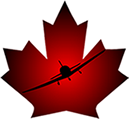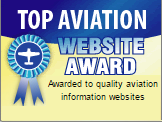 |
|
MID-AIR COLLISIONS
“What we see
depends mainly on what we look for.” “See and avoid” is our key concept in avoiding mid-air collision in a visual reference flight environment. We can only avoid what we can see and we can only see what we know how to look for. According to data from a study carried out for the Federal Aviation Administration in 1973, researchers determined that a pilot has an 86% chance of identifying an aircraft the size of a DC-3 six miles distant if he or she is fixating on the target (1). This is not all that encouraging. There is a lot of sky to scan and we all know how very small an aircraft appears against the background of big sky. At a distance of six miles, a distance considered close enough to give a pilot a reasonable opportunity to detect another aircraft, a large aircraft subtends a visual angle of approximately 0.015 degrees. If you want to give yourself a reality check, remember that this is referring to a large aircraft, grab a protractor and see what that looks like. And, of course, aircraft do not remain fixed in the same location in the air. Just to toss out some numbers to work with, if we look at two, slow general aviation aircraft, a couple of 152s for example, traveling through the sky at a leisurely 90 knots—1 nautical mile each 40 seconds—we can calculate their rate of convergence quite easily. From six miles apart, if the two aircraft are converging head on, they are approaching one another at 180 knots, 1 nautical mile each 20 seconds; they will cover six miles in two minutes (120 seconds). If they are six nautical miles apart and are converging at a 90 degree angle, they will occupy the same piece of airspace in 2.83 minutes (169.7 seconds). Remember those six miles? It was based on the 86% chance of recognizing and identifying an aircraft the size of a DC-3. It’s also based on the idea that the pilot is looking in the right place at the right time. A C-152 occupies quite a bit smaller chunk of the sky and is much less likely to be recognized and identified as easily as a larger aircraft. The aircraft that presents a risk of collision appears stationary in our windscreen. Its relative position remains constant. Remaining stationary in our visual field adds to the difficulty of detection. Our eyes are much more suited to picking out movement than recognizing fixed objects unless we are looking directly at them and they are not obscured by a complex background. Studies show that it takes a pilot approximately 10 seconds to recognize, identify, appreciate the risk of collision with another aircraft, and take appropriate action. This takes a chunk out of our available time. If the aircraft we are flying or converging with is faster than a C-152, our time margins are reduced accordingly. The key to reducing our risks when flying is to know clearly what the risks are and to know clearly what we need to do to reduce those risks. Recent studies of mid-air collisions conducted by the National Transportation Safety Board (NTSB) determined that:
So, what can we usefully do to reduce the risk of mid-air collision? There are several, very good ideas we can incorporate into our behaviours to minimize the risk factors. Here are a few of them: 1) Be familiar with the layout of your aircraft and its systems. Pilots who are comfortable and familiar with their aircraft know where things are and do not have to use excess time and energy with their eyes in the cockpit looking for things. In a NASA-funded study, researchers Colvin Kurt, et. al. found that some experienced pilots tested spent as much as 68% of their time with their eyes inside the cockpit. As workload increased, time spent looking inside also increased. When your eyes are inside the cockpit, your opportunities for recognizing other aircraft in your area are considerably diminished. 2) Plan your flight ahead and be organized with your navigation and informational materials. The less time you spend referring to materials inside the cockpit, the more time you have available to spend with your eyes outside scanning for potential threats. 3) Keep your aircraft’s windows clean and unobstructed. This seems fairly obvious, but how many people conscientiously clean their windows before each flight? How many casually lay maps, flight computers, or other objects on the dash? 4) Wear sunglasses, as required; do not use opaque sun visors. We all know the effect of glare and the limitations it puts on our ability to see. Using opaque visors can cut down a significant portion of the visible sky and result in failure to recognize a potential collision threat. 5) Always look carefully before manoeuvring your aircraft. Remember all the blind spots—high wing/low wing blockage of view, door posts, above, below? Whether you are about to turn, climb, or descend, a good look-out is an excellent plan. 6) Develop an organized and efficient scanning system and make use of it. Know and understand the limitations of your visual abilities and the blind spots of your particular aircraft. You won’t normally find collision threats inside the cockpit; plan to keep your eyes outside engaged in scanning at least 3 times as long as your internal scan. Instructing your passengers in scanning techniques and encouraging them to report sightings can add an extra degree of safety. 7) Monitor the appropriate frequency for your flight area and make certain you understand what other pilots are saying when they report their positions. Report your own position as necessary. Be very certain you hear and understand communications from ATC; if you don’t understand a transmission for your aircraft, don’t be afraid to ask ATC to “Say Again”. 8) If you are flying VFR, remain VFR. Don’t even think about playing about with a little cloud or two. Your visibility and your see-ability will be drastically reduced. 9) Be very alert when in high traffic areas. Approaching or departing an aerodrome, particularly an uncontrolled aerodrome, puts you in a significantly more vulnerable situation with relation to mid-air collisions: more traffic, limited space, convergence on a particular location and altitude. Mid-air collisions are not healthy. They are not fun. They should be avoided. As summer shines down on us and the skies become more crowded, our need to be careful, considerate, and vigilant increases. Appreciating the truth of a risk factor and taking the steps available to minimize that risk can only result in a safer and more enjoyable flight experience. End Notes: 1. Harris, J.L. (1973). Visual aspects of air collision. Visual Search, National Academy of Sciences, Washington, D.C.
|


